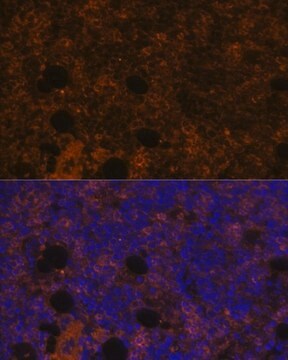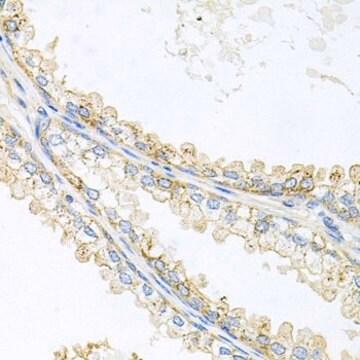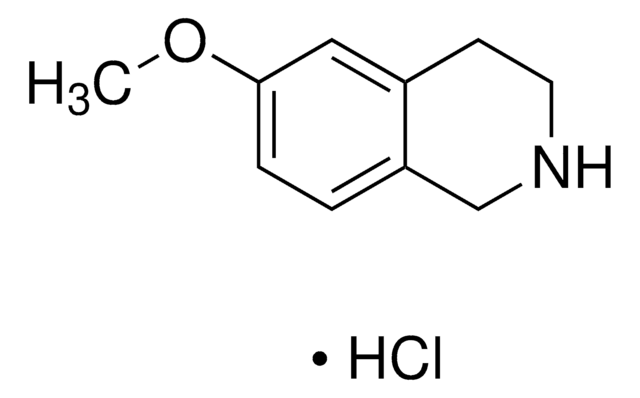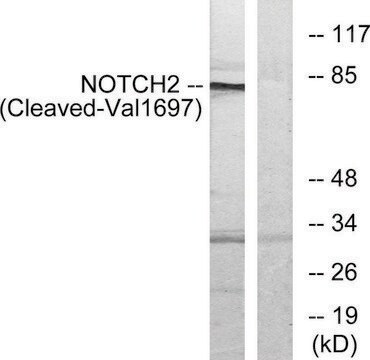MAB10207
Anti-Fusion Glycoprotein of Human parainfluenzavirus Type 3 Antibody, clone 9-4-3
ascites fluid, clone 9-4-3, Chemicon®
Sinónimos:
PI3
Iniciar sesiónpara Ver la Fijación de precios por contrato y de la organización
About This Item
Código UNSPSC:
12352203
eCl@ss:
32160702
NACRES:
NA.41
Productos recomendados
Descripción general
Human parainfluenza virus type 3 (PI3 virus) causes mild to severe respiratory tract infection in infants. PI3 virus is an enveloped RNA virus and possesses two glycoproteins, hemagglutinin-neuraminidase (HN) and fusion (F), at its external surface. These two glycoproteins are known to be responsible for initiation and progress of the infection process
Inmunógeno
Fusion (F) glycoprotein of human parainfluenzavirus type 3
Información legal
CHEMICON is a registered trademark of Merck KGaA, Darmstadt, Germany
¿No encuentra el producto adecuado?
Pruebe nuestro Herramienta de selección de productos.
Código de clase de almacenamiento
10 - Combustible liquids
Clase de riesgo para el agua (WGK)
WGK 1
Punto de inflamabilidad (°F)
Not applicable
Punto de inflamabilidad (°C)
Not applicable
Certificados de análisis (COA)
Busque Certificados de análisis (COA) introduciendo el número de lote del producto. Los números de lote se encuentran en la etiqueta del producto después de las palabras «Lot» o «Batch»
¿Ya tiene este producto?
Encuentre la documentación para los productos que ha comprado recientemente en la Biblioteca de documentos.
M A Horga et al.
Journal of virology, 74(24), 11792-11799 (2000-11-23)
Viral interference is characterized by the resistance of infected cells to infection by a challenge virus. Mechanisms of viral interference have not been characterized for human parainfluenza virus type 3 (HPF3), and the possible role of the neuraminidase (receptor-destroying) enzyme
Antiviral effects of glycosylation and glucose trimming inhibitors on human parainfluenza virus type 3
Tanaka, Yoshikazu, et al
Antiviral research, 72, 1-9 (2006)
Laura M Palermo et al.
Journal of virology, 83(13), 6900-6908 (2009-04-24)
Three discrete activities of the paramyxovirus hemagglutinin-neuraminidase (HN) protein, receptor binding, receptor cleaving (neuraminidase), and triggering of the fusion protein, each affect the promotion of viral fusion and entry. For human parainfluenza virus type 3 (HPIV3), the effects of specific
Wenyan Xie et al.
PloS one, 10(8), e0136474-e0136474 (2015-08-26)
Human parainfluenza virus type 3 (HPIV3) can cause severe respiratory tract diseases in infants and young children, but no licensed vaccines or antiviral agents are currently available for treatment. Fusing the viral and target cell membranes is a prerequisite for
Nuestro equipo de científicos tiene experiencia en todas las áreas de investigación: Ciencias de la vida, Ciencia de los materiales, Síntesis química, Cromatografía, Analítica y muchas otras.
Póngase en contacto con el Servicio técnico








